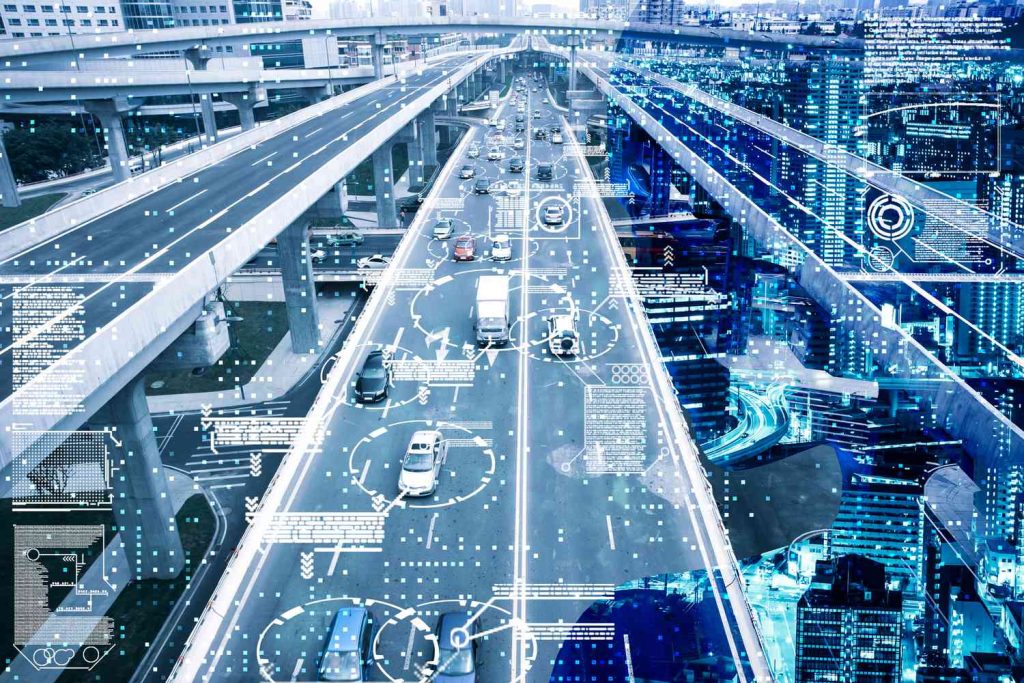Smart Transportation Innovations in Major Cities
Aiden Foster August 20, 2025
Urban mobility is undergoing a profound transformation in 2025, driven by technological advancements, sustainability imperatives, and the need for more efficient transportation systems. Cities around the world are embracing smart transportation innovations to address congestion, reduce emissions, and enhance the overall commuter experience. From AI-powered traffic management to electric vehicle infrastructure, these developments are reshaping how we move through urban spaces.

The Rise of AI-Driven Urban Mobility
Artificial Intelligence (AI) is at the forefront of revolutionizing urban transportation. Cities are leveraging AI to optimize traffic flow, improve public transit efficiency, and enhance safety. AI-powered systems analyze real-time data from various sources, including traffic cameras, sensors, and GPS devices, to make dynamic adjustments to traffic signals, predict transit delays, and provide commuters with real-time updates.
Key Applications of AI in Urban Mobility
- Adaptive Traffic Signals: AI algorithms adjust traffic light timings based on real-time traffic conditions, reducing congestion and improving flow.
- Predictive Maintenance: AI predicts when public transit vehicles require maintenance, minimizing downtime and ensuring reliability.
- Route Optimization: AI analyzes traffic patterns to suggest the fastest and most efficient routes for commuters.
By integrating AI into transportation networks, cities can create more responsive and efficient systems that adapt to the needs of their residents.
Electric Vehicle Infrastructure: Charging Ahead
The adoption of electric vehicles (EVs) is accelerating, and cities are investing heavily in EV infrastructure to support this transition. In Dubai, for instance, the deployment of 200 ultra-fast EV chargers aims to reduce charging times to under 30 minutes, facilitating quicker and more convenient recharging experiences for EV users .
Benefits of Expanding EV Infrastructure
- Reduced Emissions: EVs produce zero tailpipe emissions, contributing to cleaner air and a reduction in greenhouse gases.
- Lower Operating Costs: EVs have lower maintenance and fueling costs compared to traditional vehicles.
- Energy Efficiency: EVs are more energy-efficient, converting a higher percentage of electrical energy into vehicle movement.
Cities that invest in robust EV infrastructure are not only supporting the adoption of cleaner vehicles but also positioning themselves as leaders in sustainable urban mobility.
Microtransit: Filling the Gaps in Public Transportation
Microtransit services are emerging as a flexible and cost-effective solution to address transportation gaps in underserved areas. In San Diego, the “Southeastern Connect” on-demand shuttle service provides localized, point-to-point transportation in neighborhoods like Mt. Hope, Chollas View, and Lincoln Park. This initiative aims to bridge the gap between traditional public transit routes and the specific needs of these communities .
Advantages of Microtransit
- Flexibility: Microtransit services can be adjusted to meet changing demand patterns.
- Cost-Effectiveness: These services are often more affordable to operate and maintain than traditional transit options.
- Accessibility: Microtransit can reach areas that are not well-served by existing public transportation networks.
By integrating microtransit into the transportation ecosystem, cities can provide more inclusive and accessible mobility options for all residents.
Smart Traffic Management Systems
Intelligent traffic management systems are being implemented to reduce congestion and improve traffic flow. These systems use data from various sources, such as sensors, cameras, and GPS devices, to monitor traffic conditions in real-time and make adjustments to traffic signals and signage accordingly.
Components of Smart Traffic Management
- Real-Time Traffic Monitoring: Sensors and cameras collect data on traffic conditions, which is analyzed to make immediate adjustments.
- Dynamic Signaling: Traffic signals change in response to real-time traffic flow, reducing wait times and improving efficiency.
- Incident Detection: Systems can detect accidents or other incidents and reroute traffic to minimize disruptions.
Cities like New York and San Francisco are leading the way in implementing smart traffic management systems, resulting in smoother traffic flow and reduced congestion .
Robotic Parking Solutions: Maximizing Urban Space
As urban areas become more densely populated, efficient use of space is crucial. Robotic parking systems are being introduced to address parking challenges in congested areas. In Nagpur, India, the Nagpur Municipal Corporation has launched a multi-level robotic mechanical parking facility that can accommodate 25 cars and 150 two-wheelers. This facility utilizes robotic technology to automatically place vehicles in secured slots, maximizing the use of limited space .
Benefits of Robotic Parking Systems
- Space Efficiency: These systems can park more vehicles in less space compared to traditional parking methods.
- Reduced Traffic Congestion: By eliminating the need for drivers to search for parking, traffic flow is improved.
- Enhanced Safety: Automated systems reduce the risk of accidents and damage to vehicles.
Robotic parking solutions are an innovative approach to addressing the growing demand for parking in urban centers.
Sustainable Urban Mobility: A Global Perspective
Cities worldwide are adopting sustainable transportation practices to reduce their carbon footprint and promote environmental responsibility. Initiatives include the development of bike-sharing programs, the promotion of walking and cycling, and the integration of renewable energy sources into public transit systems.
Examples of Sustainable Mobility Initiatives
- Bike-Sharing Programs: Cities like Paris and Copenhagen have implemented extensive bike-sharing networks to encourage cycling as a mode of transportation.
- Electric Buses: Cities such as Shenzhen and Los Angeles are transitioning their bus fleets to electric vehicles to reduce emissions.
- Renewable Energy Integration: Public transit systems are incorporating solar and wind energy to power operations, reducing reliance on fossil fuels.
By prioritizing sustainability, cities can create transportation systems that are both environmentally friendly and economically viable.
The Future of Smart Transportation
Looking ahead, the future of smart transportation lies in the integration of emerging technologies such as 5G connectivity, autonomous vehicles, and blockchain. These advancements have the potential to further transform urban mobility by enabling faster communication between vehicles and infrastructure, enhancing safety, and improving the efficiency of transportation networks.
Emerging Technologies to Watch
- 5G Connectivity: Enables real-time communication between vehicles, infrastructure, and traffic management systems.
- Autonomous Vehicles: Self-driving cars and buses can reduce the need for human drivers and increase efficiency.
- Blockchain: Can be used to securely manage data and transactions within transportation systems.
As these technologies continue to develop, cities will need to adapt their infrastructure and policies to fully realize the benefits of smart transportation.
Conclusion
Smart transportation innovations are reshaping urban mobility in 2025, offering solutions to the challenges of congestion, environmental sustainability, and accessibility. By embracing technologies such as AI, electric vehicles, microtransit, and smart traffic management systems, cities can create transportation networks that are more efficient, sustainable, and inclusive. As these innovations continue to evolve, they hold the promise of transforming how we move through our cities, making urban mobility smarter and more connected than ever before.
References
- Times of India. (2025, August 18). EV revolution: Dubai to get 200 ultra-fast EV chargers, cutting charging times under 30 minutes. Available at: https://timesofindia.indiatimes.com
(Accessed: 20 August 2025). - Axios. (2025, August 18). San Diego launches on-demand microtransit service in Southeastern neighborhoods. Available at: https://www.axios.com (Accessed: 20 August 2025).
- Times of India. (2025, August 18). Robotic facility to ease parking woes in Itwari, Nagpur. Times of India. Available at: https://timesofindia.indiatimes.com (Accessed: 20 August 2025).







